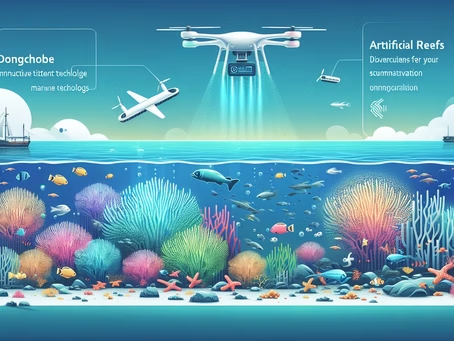Innovative Technologies in Marine Conservation
The oceans face unprecedented threats from human activity, but innovation is offering hope. From drones in the sky to artificial reefs below, cutting-edge tools are reshaping how we explore, protect, and restore marine environments. These solutions combine science, engineering, and community action to safeguard biodiversity and sustain the blue heart of our planet.
Drones: A New Perspective for Conservation
Mapping and Monitoring
Drones are revolutionizing marine cartography by producing detailed maps of reefs, coastlines, and habitats. They track shoreline erosion, document storm impacts, and help researchers monitor vulnerable areas with precision and speed.
Anti-Poaching and Surveillance
- Patrolling marine zones to detect illegal fishing activities
- Capturing real-time evidence for law enforcement
- Deterring poachers through visible aerial monitoring
Research and Wildlife Observation
Drones enable non-invasive studies of marine megafauna. From whale blow sampling to migration tracking, they collect crucial data while minimizing disturbance. These insights inform conservation strategies for threatened species.
Underwater Robotics: Exploring the Deep
Autonomous Submersibles
Self-guided vehicles map the seafloor, study ecosystems, and collect samples from depths unreachable by humans. Their missions reveal unknown habitats and contribute to global biodiversity databases.
Remotely Operated Vehicles
ROVs perform critical maintenance and repair on underwater infrastructure, reducing risks to human divers. They also inspect marine habitats and provide continuous monitoring in extreme environments.
Data Collection for Science
- Measuring water chemistry and quality
- Tracking fish movements and migrations
- Building seafloor and habitat maps
This wealth of information supports evidence-based conservation policies and long-term ecosystem management.
Artificial Reefs: Engineering Biodiversity Hotspots
Artificial reefs mimic natural structures, providing shelter and breeding grounds for countless marine species. They are constructed from eco-friendly materials such as pH-neutral concrete, recycled ships, or biodegradable substrates.
- Boosting biodiversity and fish populations
- Restoring degraded habitats
- Supporting eco-tourism and sustainable fisheries
These engineered ecosystems demonstrate how human innovation can assist natural regeneration.
Bioacoustics: Listening to Ocean Life
Hydrophones record the underwater soundscape, giving researchers insight into marine communication, migration, and ecosystem health. Healthy reefs are noisy, while silence can signal decline. Bioacoustics also helps assess the harmful effects of noise pollution from shipping and drilling, leading to better management and protective regulations.
Marine Energy Harvesting
Wave, tidal, and current energy systems generate clean power for remote marine research stations. These technologies provide renewable energy while minimizing environmental impact, reducing dependence on fossil fuels, and powering conservation operations sustainably.
Citizen Science and Community Engagement
Public involvement is vital for marine protection. Citizen scientists use apps to log sightings, clean beaches, and collect plastic pollution data. Educational outreach programs encourage sustainable practices and deepen public appreciation for marine ecosystems.
Coral Farming and Restoration
Conservationists cultivate coral fragments in underwater nurseries before transplanting them onto degraded reefs. Genetic research enhances resilience, ensuring corals survive warming waters and acidification. These efforts restore biodiversity and support communities dependent on reef health.
Tackling Plastic Pollution
Cleanup Technologies
From large-scale ocean cleanup systems to microplastic filters, new tools are capturing plastic waste before it spreads further.
Biodegradable Alternatives
Eco-friendly packaging and plant-based plastics reduce long-term waste while promoting circular economies.
Legislation and Policy
Bans on single-use plastics, recycling mandates, and incentives for sustainable materials are reshaping consumption and industry practices worldwide.
Genetic Research and Marine Biodiversity
Environmental DNA (eDNA) analysis identifies species and tracks populations with remarkable accuracy. Genetic engineering and selective breeding offer potential tools to boost resilience in corals and other vulnerable organisms. Biodiversity mapping helps pinpoint critical habitats for conservation action.
Conclusion
The fusion of technology and conservation is charting a hopeful path for the oceans. With drones, robotics, bioacoustics, and community engagement, we are building tools not only to explore but to heal. By embracing innovation and collaboration, humanity can safeguard marine ecosystems and ensure thriving seas for future generations.

